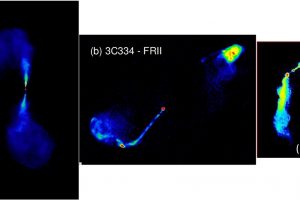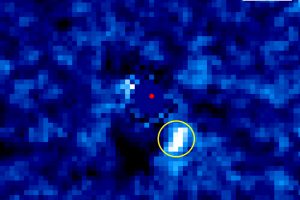Morphology and environment of the radiogalaxies. The study: “Investigating the large-scale environment of wide-angle tailed radio galaxies in the local Universe” of V. Missaglia (UniTo, OATo) appeared on A&A

Radiogalaxies are galaxies characterized by intense emission of radio waves, primarily produced by relativistic particles in motion along magnetic field lines (known as synchrotron emission). This radio emission is the result of the activity of a supermassive black hole situated at the center of these galaxies, giving rise to a plasma jet that extends over thousands or even millions of
» Read more



